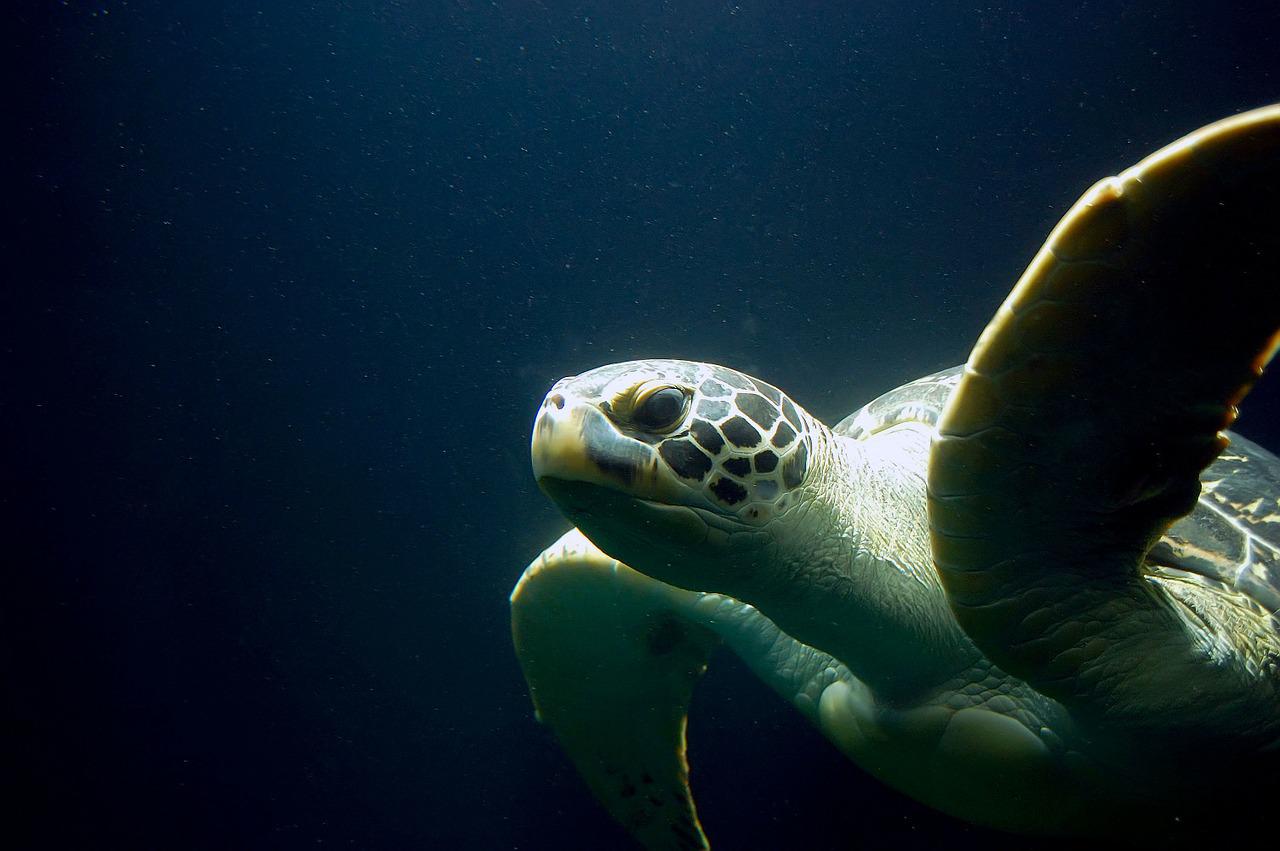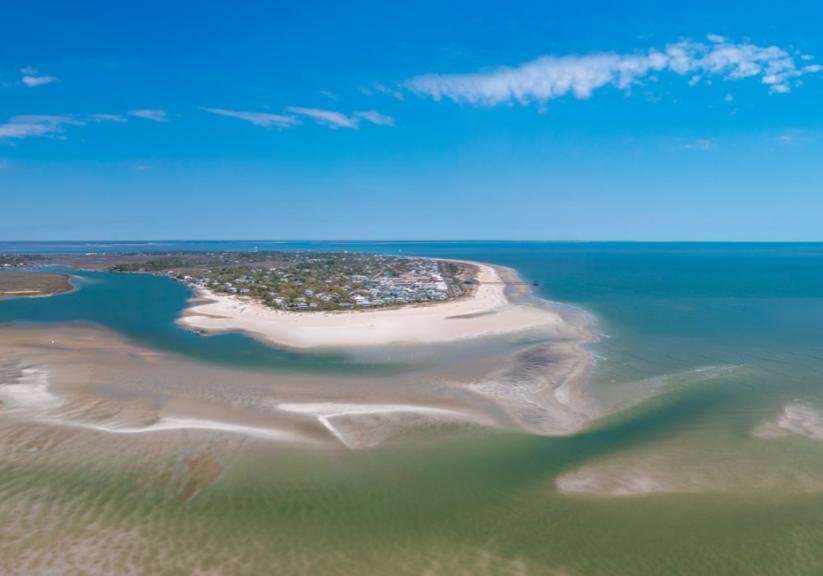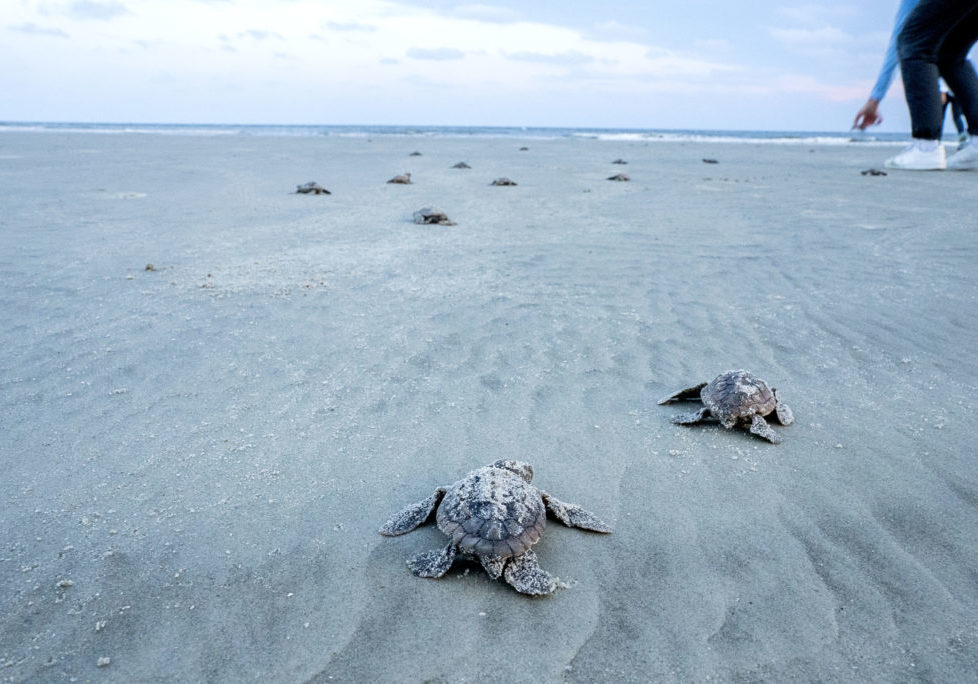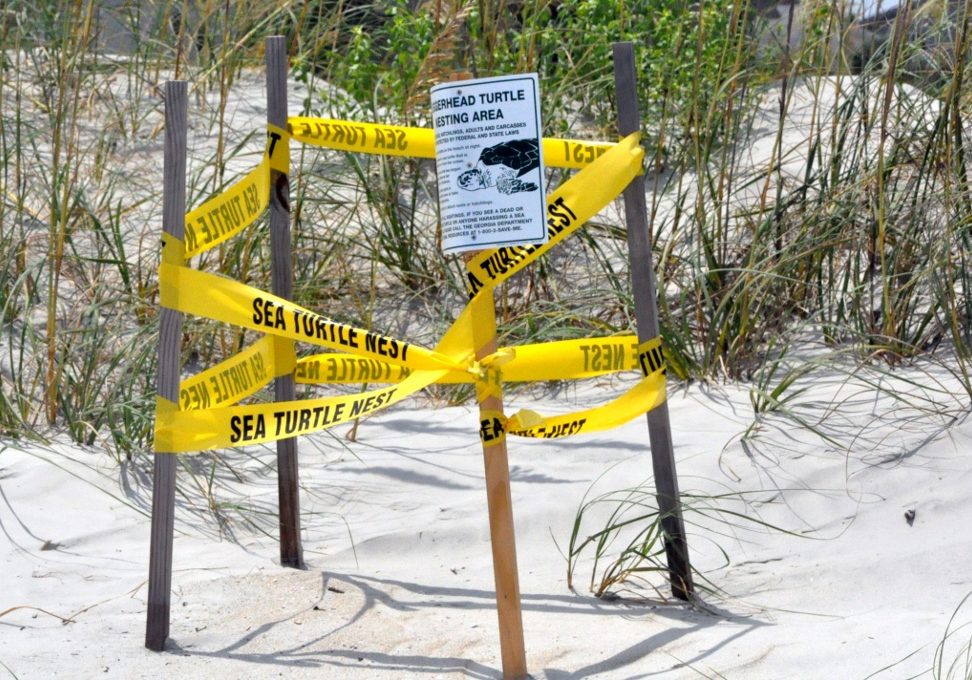Wildlife
Why it Matters
Tybee Island’s habitats are home to many state-protected and federally listed wildlife species. The diversity of habitats, from maritime forests to dunes to marshes, provides important shelter and food resources for seabirds, shorebirds, sea turtles, and their prey species. Prey species, such as horseshoe crabs, mullet, and surf clams, rely heavily on these habitats for most or at least some of their life cycle. A federally endangered species, the loggerhead sea turtle, nests along the beaches of the East Coast of the United States from May to October. The location of these nests intersects with the need to preserve and protect our dunes for the community of Tybee as well as its wildlife. Other dune nesters include state priority species of shorebirds, such as the state-threatened American Oystercatcher and Wilson’s Plover, that are known to lay their eggs on the sand and raise their chicks on barrier island beaches and sandbars. Tybee Island hosts shorebirds throughout the entire year, not just for nesting season, but also long-distance migratory species, like the federally endangered Rufa Red Knot, and wintering species, like the Piping Plovers, including individuals from the federally endangered Great Lakes population. Large congregations of sea birds, including several tern species and Black Skimmers will forage, rest, and a few of these species may try to nest as well!According to research published online by the journal Science, shorebird populations in the US and Canada have declined 37% since 1970. Shorebirds are extremely vulnerable to high tides, storm surge, nest predation, and human disturbance. By increasing the resiliency of Tybee, we are protecting wildlife as well. As members of a coastal community, we are working to create a place where wildlife and humans thrive for generations to come.
The Threat
Tybee Island is home to a unique and diverse ecosystem that is threatened with the frequency of flooding events. Reducing the impacts of flooding will help conserve species that nest on Tybee Island's beaches. As sea levels rise, resulting in the loss of sandy beaches, shorebird nesting and feeding habitat will dwindle. A smaller area can only support a limited number of individuals leading to increased competition.
Sea level rise is also threatening the nesting sites of sea turtles. Sea turtles are federally endangered and are especially susceptible to flooding as they return to the same nesting site every year.
Although well-intentioned, some efforts to reduce the impact of flooding can be detrimental to wildlife on Tybee Island. Shoreline hardening is the insertion of concrete structures (e.g., seawalls, jetties) to protect against sea level rise, storms, and erosion. This helps prevent flooding of human habitat, but shoreline hardening has the potential to disrupt native species' ecosystems by causing habitats to dwindle and increasing erosion though the exact effects are not known yet.

What Tybee Island is Doing
Efforts must be taken to protect Tybee Island's unique ecosystem while developing sustainable coastal infrastructure. One such technique is called a living shoreline. Living shorelines contribute to coastal resilience by reflecting wave energy and promoting the growth of native plants. Tybee Island has already installed one living shoreline at the Burton 4-H Center. Creating living shorelines along Tybee Island's coast may prove beneficial to coastal wildlife by reducing further habitat destruction. More sustainable techniques like this will prevent flooding incidents without jeopardizing the unique biodiversity of Tybee Island. By taking precautionary actions against sea level rise instead of just reacting to flooding incidents, we can begin to manage and conserve coastal habitat and its wildlife.
Another technique in protecting this valuable barrier island habitat is the designation of a “Wildlife Beach Area (WBA)” with our partners from Manomet’s Georgia Bight Shorebird Conservation Initiative. In these WBAs, shorebird biologists and stewards are interacting with the public about how important these areas are for wildlife and what we can do as beachgoers and volunteers to help. By giving birds and wildlife space, they will be able to better navigate higher tides, erosion, loss of habitat, and disturbance. Tybee Island provides an opportunity to create connections between visitors, residents, and this important landscape while protecting habitat for wildlife.
Posting signage for this project has been permitted by the Georgia Department of Natural Resources. To read more about Wildlife Beach Areas and plans for this project, please visit: Manomet, Temporary Activities in Shore Protection Act Jurisdiction, Multiple Locations, Chatham County & Glynn County, Georgia | Department Of Natural Resources Division (coastalgadnr.org)



